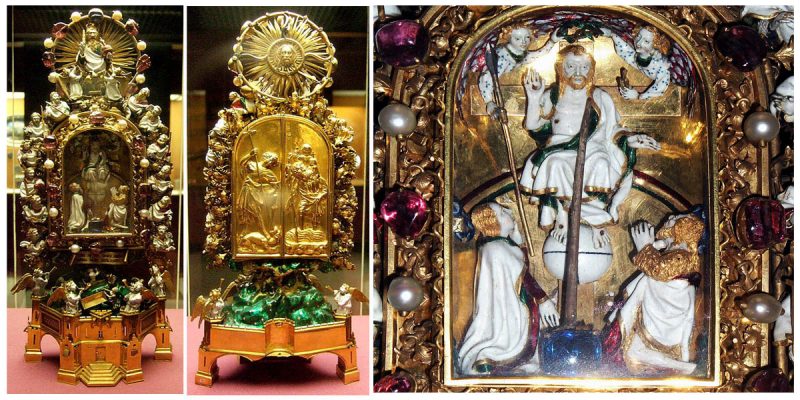One of the greatest relics of medieval Christianity is the Holy Thorn Reliquary, with its magnificent vision of the Last Judgement. It was probably created for John, Duke of Berry in the 1390s. It is said that this reliquary was made to house one thorn from the Crown of Thorns, worn by Jesus when he was crucified.
In 1239, when King Louis IX of France bought what he believed to be the real Crown of Thorns in Constantinople, the thorns were separated and were sent as gifts to the French kings.
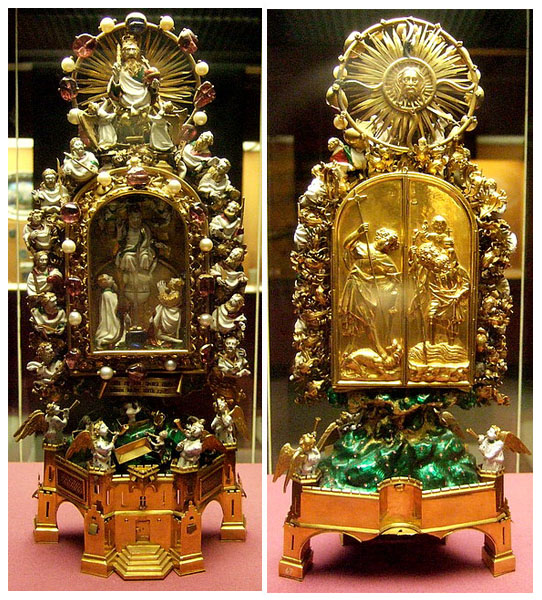
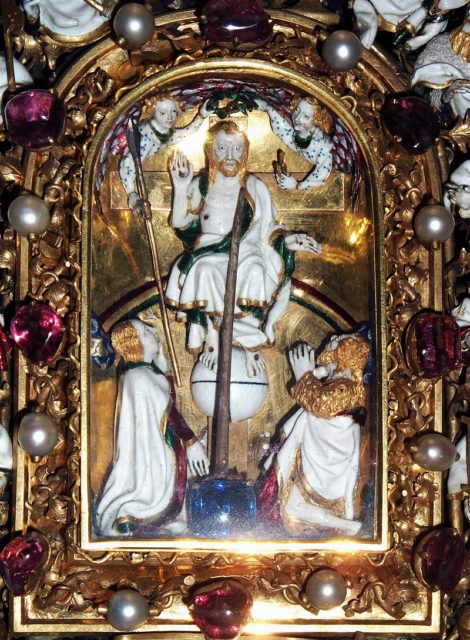
The reliquary is made of gold, decorated with jewels and pearls, and has two faces. The front side shows the Last Judgement with the Trinity and the resurrection of the dead below, and in the middle, there is a crystal window where one thorn from the Crown of Jesus is displayed. Christ in judgment is shown with his feet on the globe of the world making a blessing gesture. On the back side, there is a low relief in gold and there is an empty space within the doors, upon a flat surface, believed to have kept another relic in the past.
The two doors are secured with a small pin and are decorated with reliefs of two saints. On the left door there is the archangel Saint Michael and on the right door is Saint Christopher. On the top of the relic, there is a medallion with the face of Jesus set in a sunburst.
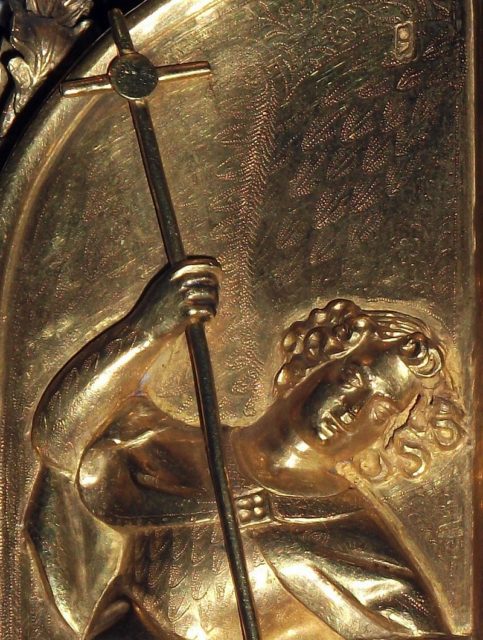
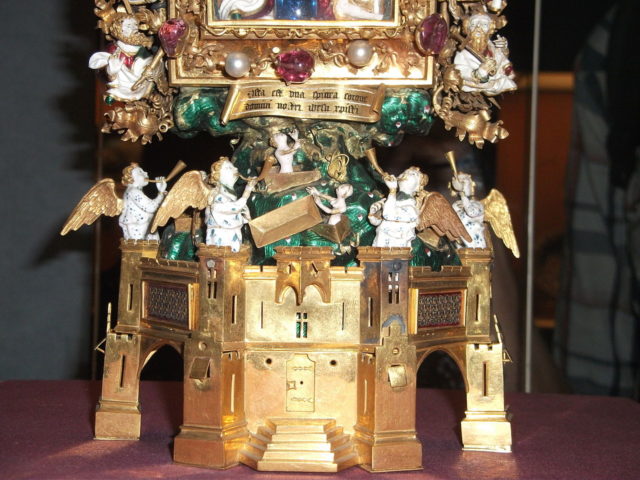
The reliquary is a wonderful example of the art of enameling, mostly done en ronde bosse, an enameling technique. In the 14th century, this technique was an innovation which was practiced by the goldsmiths working for the Valois family.
The reliquary is made of white enamel with golden designs and has no blue enamel color because it would cover the light of the beautiful sapphires. The maker of the Holy Thorn reliquary is unknown and there is no sign or mark because the goldsmiths of that period rarely did that.
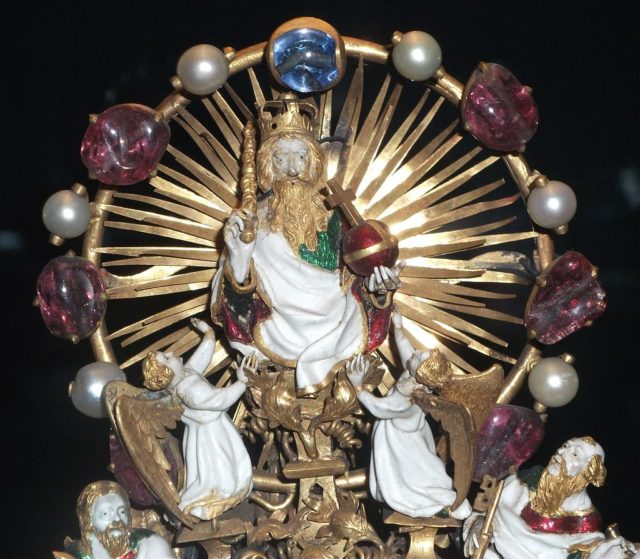
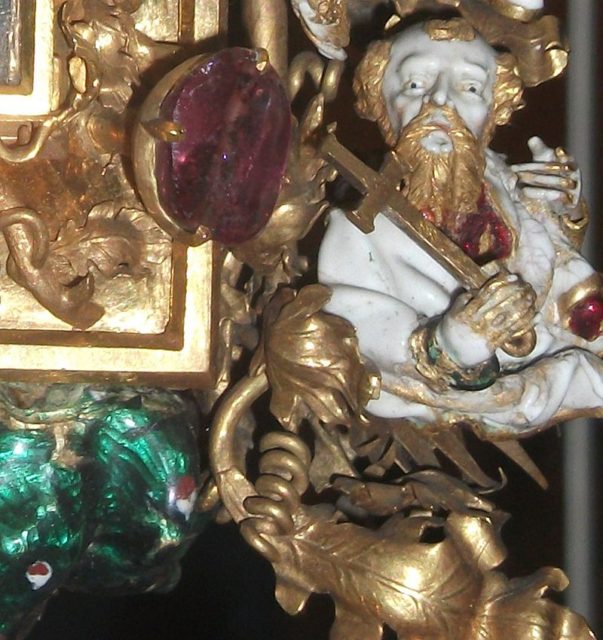
In 1898, when the reliquary came to the British Museum for the first time, its full history was unknown. In the 1860s, after an exhibition in Vienna, the relic with four other items was sent to the art dealer, Salomon Weininger, for restoration.
He made a fake example of the reliquary and it remained undetected until the original piece came to the British Museum in 1959. For many visitors, this reliquary presents a unique piece of medieval craftsmanship, and for others, it is a sacred relic for prayer and contemplation.
